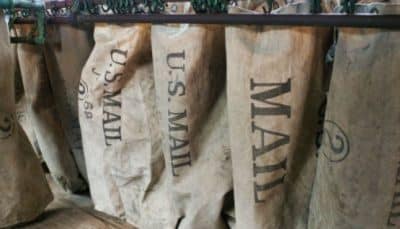
By Kenneth Carter
For the Bay Journal News Service
With all due respect to the songwriting genius of Sir Paul McCartney and John Lennon, I don’t think the Beatles were thinking about natural succession when they wrote the song Let It Be.
In my 40-plus years of conservation work, I have seen natural succession heal some profoundly degraded sites. Abandoned cropland and pastures are the most common examples seen today. This natural phenomenon of the transition from annuals to perennial grasses and forbs and eventually to woody vegetation has reduced tremendous amounts of sediment over the lifespan of these sites. I remember a tall pine stand behind my boyhood home, where the ground still showed the ridges and furrows of a long-abandoned cornfield.
The fact that natural vegetative growth can and will heal disturbed ground, however, does not automatically make it a desired remedy and may be far from a “best management practice.” Many sites are too heavily degraded with deep gullies, total loss of topsoil or other factors that prevent healing. In those cases, some type of mechanical treatment is necessary prior to vegetative establishment to correct the existing erosion and prepare a proper planting condition.
In addition, it is a very slow process and one not many conservationists would recommend to a land user or landowner. Most would not want to wait that long or take on the risk of failure.
That said, my personal experiment with an eroding shoreline on my own land has yielded interesting results and new insight in my understanding of natural succession.
In 2009, right at the time of my retirement, I inherited land along the Great Wicomico River on Virginia’s Northern Neck. Part of the shoreline along a tributary creek had been stabilized by a wooden bulkhead years before, but the portion along the main riverbank was eroding at a rate I estimated to be 6–12 inches a year. I did not want to consider extending the bulkhead or using riprap to stabilize the site. I preferred to use a vegetative option — if it would work.
In the early 1980s, I participated in joint efforts with what is now the Virginia Department of Conservation and Recreation, the Virginia Institute of Marine Science and what is now the Natural Resources Conservation Service to investigate sites for vegetative establishment to stop erosion along tidal shorelines. In addition, I participated in the development and management of Virginia’s stream and shoreline buffer programs since their inception. Now almost 70 years old, I thought I knew what would work, but it appears that I am still learning.
My first attempt at a treatment option was to establish a buffer to slow overland flow. The previous owner had a local person cutting the grass on the property and mowing it right to the shoreline. So I flagged off a 25-foot buffer zone where the shore was eroding and gave strict instructions not to mow this area at all.
Over the next few years, I had a mess. More than one neighbor “commented” on the growth and asked about my intentions. In the several years that followed, though, the unsightly tangle of fescue grass and weeds started to thin out, and native warm season grasses took their place. I had heard anecdotal accounts of these native grasses flourishing on abandoned sites along tidal rivers for years but had never actually watched the process unfold.
As the years progressed, the bank began to heal itself. The erosion virtually stopped. One or two hurricanes caused an isolated spot or two to wash out, but they quickly healed on their own.
In hindsight, I wish I’d run an elevation profile on the site, as the steep bank lessened and is moving toward a safer angle of repose covered by the native grass. Much to my amazement, the most interesting thing happened four years ago, when I noticed a few sprigs of vegetation growing in the intertidal zone. Since then, a natural marsh fringe of smooth cordgrass (Spartina alterniflora)has established itself.
The only maintenance I do on the site is to periodically (every two or three years) remove any woody vegetation that has sprouted.
Throughout this process, I have not spent any money on the site. I simply “let it be.” All of the growth is natural with nothing seeded or managed, other than occasional hand labor with a machete.
Would I recommend this method in most cases? The answer is no. It is too slow a process. Establishing a living shoreline through planting is a far better option and heals a site more quickly.
Am I glad I did it this way? Yes, I have enjoyed watching the change; I have realized I am never too old to learn. And when I’m listening to the oldies channel, I find I have a new appreciation for the song Let It Be.
Kenneth Carter, a retired assistant state conservationist with the USDA’s Natural Resource Conservation Service, lives in Virginia. His views do not necessarily reflect those of the Bay Journal. This article first appeared in the May 2022 issue of the Bay Journal and was distributed by the Bay Journal News Service.










